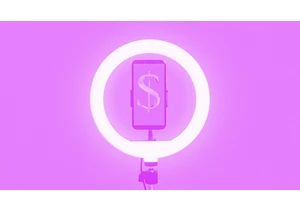“Nobody: You know what we need?…a thinner iPad”
“Of all the things Apple could innovate… ain’t nobody thinking ‘I want a thinner iPad’”
“Nobody wants a thinner iPad, Tim.”
Last week, Apple streamed an iPad launch event that trumpeted its new iPad Pro as “the thinnest Apple product ever.” As the above reactions from Twitter/X indicate, it’s fair to say the achievement wasn’t met with instant adulation. Even the company’s new commercial conveying how thin the new Pro is—which depicted beloved real-world creative tools such as a piano and paints being crushed—turned out to trigger people rather than intrigue them.
I was primed to be skeptical myself. After all, back in 2021, when Apple introduced heavier, thicker MacBook Pros that brought back the memory-card slot and HDMI port, I cheered the tacit acknowledgment that its long-standing mania for slimming down its devices had gone too far.
But for the past few days, I’ve been trying the new 13-inch iPad Pro with its updated Magic Keyboard and the new iPad Pencil Pro, as well as the new 13-inch iPad Air, in the form of review units provided by Apple before their May 15 on-sale date. The single most rewarding thing about the new gear is the iPad Pro’s reduction in size and weight. It meaningfully changes the iPad experience for the better in ways the specs don’t capture. (For the record, the 13-inch Pro, at .20” thick and 1.28 pounds, is .05” thinner and 3.6 ounces lighter than its predecessor.)
The iPad Pro’s sleek new reimagining does come at quite a cost. Apple has hiked the line’s starting price to $999, for an 11-inch model with 128 GB of storage; that’s up $200. A fully tricked-out 13-inch iPad Pro with 2 TB of storage, a cellular modem, the new glare-resistant nano-texture glass option, a Magic Keyboard, and an Apple Pencil Pro will set you back an eye-watering $3,077. Moreover, if you were using a Magic Keyboard and second-generation Apple Pencil with a previous iPad, you’ll need to replace them: They’re incompatible with the new Pros.

The iPad Pro’s unapologetic spendiness leaves a welcome spot in the iPad portfolio for the new iPad Air. The new 11-inch Air is no thinner or lighter than its earlier Air and Pro counterparts. But more than ever, it’s an iPad Almost Pro, delivering an impressive percentage of the Pro’s goodness for hundreds of dollars less at any given configuration. Apple has also added a 13-inch Air, reminiscent of last year’s 15-inch MacBook Air in its mainstreaming of the big screens the company formerly reserved for its priciest product tiers.
Add in substantial upgrades to the Magic Keyboard and Pencil, and Apple just gave the iPad its best refresh since 2018. (2022’s upgrades were a tad perplexing and 2023 saw no new iPads at all.) Still, people who care about the future of the iPad should keep their expectations in check until June’s WWDC event and news of the next version of iPadOS. Especially since Apple’s hardware and software visions for the platform have often seemed misaligned in a way that’s rare for anything hailing from Cupertino.
iPad Pro: Less of a handful
Of all the products Apple makes, the iPad may benefit most from increased svelteness—svelterness?—as a design goal. After all, a tablet isn’t like a laptop, whose thickness and weight matter mostly when you’re toting it around. Holding the iPad in a variety of ways is fundamental to interacting with it: like a dead-tree book, like a pad of drawing paper, like a portable movie player, like a jumbo-size gaming handheld. Even a mundane task such as scanning a paper document requires picking the tablet up in a particular fashion. (Speaking of which, Apple tweaked the new iPad Pro’s back camera’s flash to improve scanning quality in murky lighting.)
As nice as a roomy screen is, previous versions of the big iPad Pro could be unwieldy in many of these contexts—enough so that I downsized to the 11-inch version in 2021, a switch I’ve never regretted. Compared to its bulkier predecessors, the new 13-incher is just a pleasanter, less fatiguing object to have in your hands, particularly for extended periods. With apologies to everyone who’s so confident nobody wants a thinner iPad, I’m still not satisfied: If Apple can make future iPads even trimmer, it should.
That the company was able to reduce the current model’s heft as much as it did is thanks to its latest processor, the M4, which—in a shocker to folks who thought it would show up only later in the year, and probably in a Mac—is debuting in the new iPad Pro. Without the M4, reducing the tablet’s thickness and weight might have come at the cost of reduced performance and battery life. With the chip, Apple says, the new Pro’s CPU performance is up to 1.5 times faster than the previous-generation model based on the M2, with the same 10-hour battery life of every iPad back to the 2010 original. (I didn’t run speed tests on the tablet, in part because even my three-year-old iPad Pro with an M1 chip never feels sluggish; over at Six Colors, Jason Snell performed benchmarks that show the new iPad Pro handily outperforming previous iPad Pros as well as the MacBook Air.)
The M4 chip is also essential to the iPad Pro’s other new flagship feature, its new Ultra Retina XDR display. That’s Applespeak for screens based on “tandem” OLED technology, which uses two panels to meld traditional OLED virtues such as deep blacks and vivid colors with up to 1000 nits of brightness (1600 nits for HDR content), all in a thin, power-efficient form. I’m not sure if the results are meaningfully better than the mini-LED tech used in the previous big iPad Pro, but it’s easy to see the improvement over the LCD screens in the new iPad Air and previous 11-inch iPad Pro.

One other mundane, overdue new iPad Pro feature makes me a little giddy. Apple finally relocated the tablet’s front-facing camera from the portrait edge to the landscape edge, so it’s centered above the screen in instances such as when you’re making a Zoom call with the tablet in a keyboard case. Until now, that scenario has placed the camera halfway down on the left side of the tablet, leaving me off-center and seemingly shifty-eyed. It’s such a dismal way to present myself to the world that I’ve tried to avoid making important calls from my iPad Pro. No longer.
I’m also irrationally pleased by an upgrade Apple made to its new version of its Magic Keyboard case, which is compatible only with the new iPad Pro. Though largely similar to the previous version, which remains available for the iPad Air and previous-generation iPad Pros, it adds a row of function keys alone the top for common tasks such as adjusting the volume and screen brightness, launching dictation, and controlling media. That, along with the new version’s larger trackpad, aluminum palm rest, and slightly thinner and lighter specs turn the iPad Pro into by far the most laptop-like iPad ever. As they should, at $349 for the 13-inch Magic Keyboard and $299 for the 11-inch one.
One thing about the new Magic Keyboard, though: During my time with it, I encountered sporadic moments when clicking the trackpad—which now uses haptic feedback rather than actually moving when you press it—didn’t register properly in Safari, the Dropbox app, and elsewhere. This issue persisted even after Apple provided a replacement Magic Keyboard. How widespread this misbehavior might be, I don’t know. But it’s a significant bug that I hope Apple will quickly diagnose and resolve.
I experienced no such quirks with the new $129 Apple Pencil Pro. It adds a new squeeze gesture that performs tasks such as pulling up quick tool menus right at your pen point, a gyroscope that enables you to rotate the Pencil in your fingers for fine control over virtual art implements in apps such as Apple’s Notes, haptic feedback, and compatibility with Apple’s Find My service for misplaced gadgets. The Pencil Pro performed admirably in beta versions of Procreate, Goodnotes, SketchUp, and other apps, and I can’t wait to see what additional developers do with it.
Along with adding all this new stuff, the Pencil Pro is also compatible with the revised magnetic charging system Apple devised to allow the stylus to cling to the same edge of the iPad Pro where the front-facing camera and Touch ID sensor are located. That’s why the Pencil Pro is compatible only with the new iPad Pro and iPad Air. It’s also why the only previous Pencil that works with the new iPads is the version that charges via USB-C rather than magnetically. (It lacks pressure sensitivity, so I don’t recommend it.)
For people upgrading from earlier iPads, having to acquire a new Pencil Pro is a pricey complication. Having finally reengineered the camera and Pencil to play nicely, here’s hoping Apple henceforth maintains a level of ongoing Pencil compatibility it’s never achieved thus far.
iPad Air: sensible compromises
Then there’s the new iPad Air, which is a pretty easy product to explain. (Though apparently not so easy to name: The Air brand, which dates to a skinny 2013 iPad, makes no sense on these new models, which are strikingly chunkier than the new iPad Pros.)
For several generations now, the iPad Air has sat in the midrange of the iPad lineup, catering to folks who crave a step up from an entry-level iPad but are put off by the iPad Pro’s cost. With the new iPad Pro’s higher prices, that job has become only more important, and the Air fills it well. In fact, it fills it better than ever, in part because there are now two Airs: The 11-inch model (replacing the previous 10.9-incher) and the all-new 13-inch version.

From their heftier form factors to less advanced displays to more basic speaker and microphone setups, the new iPad Air does make their share of technological sacrifices compared to the costlier iPad Pro. But it doesn’t come off as compromised, just less ultra-deluxe. Crucially, it matches two of the Pro’s best new features: the landscape camera orientation and compatibility with the Pencil Pro.
The one aspect of the new iPad Air that felt like an economy measure to me is its use of Touch ID rather than Face ID. As long as your fingers are already in the vicinity of the side button where the Touch ID sensor resides, it’s no big deal. But if the Air is in a Magic Keyboard, reaching up to use Touch ID is a reminder you’re using a tablet masquerading as a laptop. By contrast, the iPad Pro’s Face ID is as effortless as an authentication method gets.
As the iPad lineup expands, it’s reasonable to worry about the profusion of options complicating buying decisions rather than simplifying them. With both the Air and Pro now available in two sizes, the lines do increasingly overlap. Ultimately, though, with the Air topping out at $1,449 and the Pro at $2,599—sans Magic Keyboard and/or Pencil Pro—I don’t think most prospective buyers will have that much trouble gravitating toward the right iPad for them.
Next stop WWDC
There comes a moment in every iPad review when its author, after finding much to admire in the new hardware, pauses to fret about the tablet’s software. That moment is now. May I speak as someone who’s used various iPads as my primary work machines for more than a dozen years?
The iPhone, the Mac, and the Apple Watch all reflect Apple’s exuberant self-confidence about what each platform should be, from chip to app. Sadly, it’s been years since the iPad showed the same degree of integration, which is why I called it a beautiful disappointment last year.
Back in 2019, when Apple started calling the iPad’s operating system iPadOS, I took it as a statement of how committed the company was to making sure the platform lived up to its endless potential. Five years later, progress has been far more languid than I would have predicted. For example, iPadOS 16’s big new feature, the off-by-default Stage Manager windowing interface, has pretty much been a bust, unless you’re using your tablet with an external display. And when it came to enhancements designed with a tablet-size display in mind, last year’s iPadOS 17 offered the slimmest of pickings.
The ambition of the iPad’s hardware and MacBook Pro-like pricing of its top-of-the-line models tells us that Apple sees it as catering to people doing serious work. It’s just that iPadOS has been wandering around in circles, as if the company was short on ideas for pushing it forward or too busy with other projects.

I do find room for trepidatious semi-optimism in the fact that last week’s iPad unveiling included the announcement of new versions of Apple’s own Final Cut Pro video editor and Logic Pro audio editor. When making the case that the iPad Pro is an industrial-st
Login to add comment
Other posts in this group

Ever since AI chatbots arrived, it feels as if the media has been on the losing end o

Aside from the obvious, one of the best parts of the work-from-home revolution is being able to outfit your workspace as you see fit.
And if you spend your days squinting at a tiny lapto

Child psychologists tell us that around the age of five or six, children begin to seriously contemplate the world around them. It’s a glorious moment every parent recognizes—when young minds start

During January’s unprecedented wildfires in Los Angeles, Watch Duty—a digital platform providing real-time fire data—became the go-to app for tracking the unfolding disaster and is credit



Yahoo’s bet on creator-led content appears to be paying off. Yahoo Creators, the media company’s publishing platform for creators, had its most lucrative month yet in June.
Launched in M
